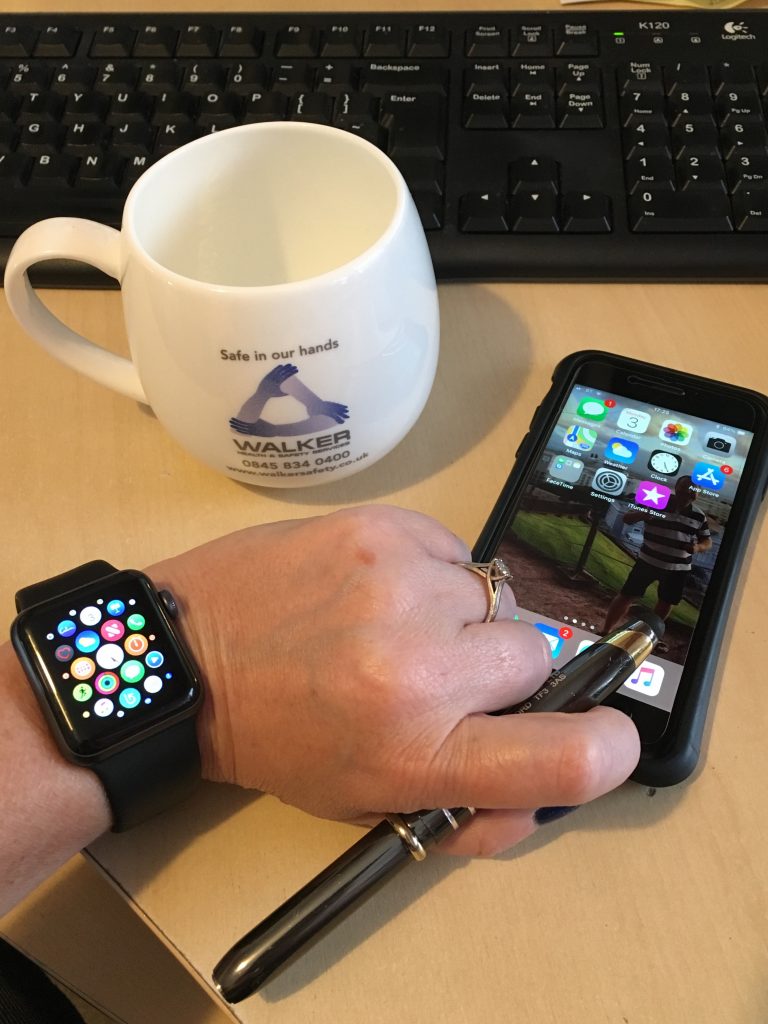
Actions to Address the Causes of Workplace Stress
To address the common aspects of working life that can cause stress, managers should regularly do the following.
Review workloads, targets and deadlines.
This may involve:
- Reviewing the volume of work each employee is expected to achieve in order to assess whether it is fair, reasonable and realistic
- Consulting employees about their workloads to establish how they perceive management’s expectations of them
- Recognising that all individuals have their limits and are different in their abilities
- Reviewing whether the demands being made on particular individuals are within those individuals’ personal coping resources
- Taking steps to identify and cut out any unnecessary or duplicated work.
Examine working patterns and hours.
This may involve:
- Accepting that it is detrimental both to individuals and the organisation if employees work excessively long hours
- Examining ways of reducing working hours to a manageable and reasonable level, by considering strategies such as imposing a maximum number of permitted hours per week on all staff, monitoring whether employees take proper breaks and holidays, reviewing and/or redistributing workloads and/or recruiting additional staff
- Offering employees a choice, wherever possible, as to their working patterns and the number of hours they work
- Facilitating alternative ways of working, e.g. job-sharing or home working.
Review employees’ jobs and how they are done. This should involve:
- Providing every employee with a clearly written job description which details their responsibilities, duties, objectives and priorities
- Giving individuals more control over their day-to-day work whenever possible
- Finding ways of giving employees opportunities to do different or more challenging work from time to time
- Listening to employees’ views about their work and the ways in which it is performed.
Examine whether communication is effective. This may involve:
- Reassessing how communication takes place in the organisation, e.g. if it is all conducted by email, seek to spend more time talking to people face-to-face
- Introducing email etiquette and guidelines to encourage staff to think about when email communication is or is not appropriate and provide examples
- Checking (rather than assuming) that each employee properly understands how his or her job fits in with the organisation as a whole
- Consulting staff regularly about matters that might affect them
- Providing individuals with regular face-to-face feedback on performance, remembering that a little bit of praise can go a long way
- Encouraging employees to raise any workplace problems they may have, including problems related to workplace stress, while making sure that everyone knows they can do so without fear of recrimination.
Provide adequate training, support and resources. This should involve:
- Ensuring that no employee is promoted or transferred before he or she has received the necessary training for the new post
- Consulting each employee about his or her training needs, while recognising that different people need different amounts of support
- Making time to provide individuals with relevant training and coaching.
Examine the prevalent management style. This may involve:
- Conducting an attitude survey to find out how employees view the organisation’s management
- Offering management training to all those who have supervisory responsibility for staff
- Encouraging an open, consultative management style
- Providing coaching to any managers whose traditional style is perceived as authoritarian or dictatorial.
Implement a bullying and harassment policy and associated complaints procedure. This will involve:
- Recognising that workplace bullying happens, rather than denying its existence
- Recognising that bullying can take many forms
- Making and communicating a strong management commitment to the elimination of bullying and harassment in the workplace
- Taking all complaints of bullying or harassment seriously
- Investigating any complaints promptly with a view to putting a stop to any behaviour that is causing offence or distress
- Providing awareness training on harassment for all staff
- Taking disciplinary action against any employee who is found to have bullied or harassed a colleague.
Contact us should you require further information.

Epilepsy is a neurological condition affecting around 600,000 people in the UK — so it’s essential that every employer knows how to help those with the condition. Health, safety and ergonomics consultants System Concepts lay out the 10 key actions to take.
What every employer needs to know
The majority of people diagnosed with epilepsy are likely to be classified as disabled by the Equality Act 2010. This means that employers must make reasonable adjustments for people with epilepsy, and complete appropriate risk assessments.
There are many different types of epilepsy, but people who have it have a tendency to have epileptic seizures. A seizure is a sudden burst of electrical activity in the brain, which causes a temporary disruption to the way the brain normally works. Seizures can range from the person remaining alert and aware of their surroundings, through to the person losing awareness and becoming stiff, falling to the floor and/or experiencing uncontrollable, jerky bodily movements.
If your organisation has an employee with epilepsy, these are the 10 key actions you should take.
- Understand the nature of the condition. Have a private talk with the affected employee to discuss how the condition affects them. Ask about:
- medication requirements (particularly at work)
- how well their epilepsy is managed
- type, duration and frequency of seizures
- any associated musculoskeletal issues
- any medication side effects
- any warning signs that they are about to have a seizure.
- Identify any triggers for seizures. This will help you work out how these can be eliminated or reduced to minimise the risk as much as possible. Consider:
- temperature
- light
- stress
- tiredness
- flicker
- season
- whether the work is indoors/outdoors
- computer screens, etc.
- Understand the individual’s requirements during and after a seizure. Once you know these, you can ensure that appropriate provision is made, eg a suitable place for rest/recovery, such as a first-aid room with appropriate facilities. Questions to ask would include:
- the likely recovery time
- the individual’s preferences for recovery (location, need for sleep or rest, desire to be accompanied, ability to continue working, practicalities of recovering at work or home)
- when paramedics are required or when first aiders should be able to manage the situation.
- Develop a care plan. This should be an individual care plan that sets out the details of the above three points.
- Consider allocating the person a dedicated locker. This would allow them to store items needed during/after they have a seizure (if not fully controlled by the medication). This could be used for:
- their care plan
- a breathable pillow
- a blanket
- any required medications
- a spare change of clothes.
Ideally, their line manager and first aiders would have a key to the locker for use when the individual is unable to access the contents themselves.
- Organise the individual’s work. Working hours, tasks and the pace of work should all be evaluated to ensure:
- targets and workload are manageable
- lone working is avoided
- driving is not required
- shifts that might influence seizures or medication times are avoided
- adequate breaks are given
- there will be at least one first aider on site with the individual at all times.
- Complete a DSE workstation assessment. This may indicate that certain equipment may be useful. Someone who has epileptic seizures is likely to require a:
- LCD screen
- fully padded chair with armrests, high backrest, headrest and braking system
- padding around any hard surfaces or sharp corners (such as the desk)
- wireless headset
- large space around the workstation, free of any hazards (such as loose cables).
- Ensure their safety in the workplace. Things to consider would include:
- implementing a buddy system or asking the individual to wear a fall-activated or pendant alarm
- reducing the need for them to use stairs, wherever possible (the importance of enforcing this is dependent on the nature and frequency of their seizures)
- (with the individual’s permission) inform everyone who regularly comes into close contact with them about the nature of their condition and how to react in an emergency situation — this includes site first aiders, close colleagues, reception staff, canteen staff and security staff.
- Provide easy access to an accessible toilet. If they are at risk of seizures, an accessible toilet offers more space and:
- the risk of injury is reduced
- they can use the alarm pull cord to request assistance, if needed
- the door can be opened from the outside in the event of an emergency
- how they will make their way to their nearest fire escape route
- what assistance they will need to get to the nearest fire escape route
- how they will travel down stairs to the final fire exit, including use of an evacuation chair and who is trained to use it
- what assistance they will need outside of the office at the assembly point. Complete a Personal Emergency Evacuation Plan (PEEP) for the individual.Epilepsy at work is a more common issue than you may have realised, and employers need to be aware of their responsibilities to help employees with this neurological condition.
Contact us should you require advice.




 Networked mobile devices, cloud-based data management and 4G networks mean we can now work almost anywhere. Flexible working can save costs and improve the work-life balance of employees, resulting in more staff working while travelling and away from the office. This means an increasing use of mobile devices (laptops, tablets and smartphones).
Networked mobile devices, cloud-based data management and 4G networks mean we can now work almost anywhere. Flexible working can save costs and improve the work-life balance of employees, resulting in more staff working while travelling and away from the office. This means an increasing use of mobile devices (laptops, tablets and smartphones).




